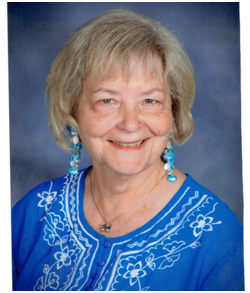Veterans Affairs Voluntary Service (VAVS) supports the U.S. Department of Veterans Affairs and Veterans Health Administration strategic goals by recruiting, supporting, and retaining a knowledgeable, diverse, and engaged supplemental workforce of volunteers to assist management in the delivery of VA health care. To learn more about VAVS, visit www.volunteer.va.gov.
 Pat Kranzow, an American Legion Auxiliary member of the Department of Illinois, shares her VAVS experiences as part 2 of this series.
Pat Kranzow, an American Legion Auxiliary member of the Department of Illinois, shares her VAVS experiences as part 2 of this series.
How long have you been a VAVS volunteer?
My mother started volunteering in 1954. When I was 16 (1958), she started taking me with her during summers and vacation days at West Side VA — now known as Jesse Brown VAMC. There were years in between when I lived in Missouri and was involved with full-time wife/mother and professional responsibilities when I did not volunteer. In 1996, I started volunteering at Hines VA.
What first interested you in joining VAVS?
Experiences with my mother. Her motivation was “giving back” for the volunteers who aided my father as he recovered from injuries sustained in World War II.
What are some tasks you do as a volunteer?
Currently, I have taken the orientation course to become a compassionate care corps volunteer and am waiting for an assignment. As the ALA national VAVS deputy representative, I correspond with our local VA representatives and deputies and keep records of their accomplishments.
In the past, I have prepared bulletin boards for patient education, fed patients with quadriplegia, tutored patients enrolled in college telecourses, assisted with patients who submitted work to Veterans’ Voices, helped with Zoom writing courses, and helped with computer recordkeeping.
Why is it important to you to help our veterans in this way?
The variety of tasks gives me an opportunity to use my skills to support veterans’ health care.
What is your favorite reason for being a VAVS volunteer?
Experiencing the success of patients accomplishing their goals.
Any personal stories you want to share from interacting with veterans and/or their families?
I worked with a residential quadriplegic patient who was a poet. He had 400 poems in his head. We worked to get these down in print, edit them, and submit some of them for publication in Veterans’ Voices. Many were published.
I also worked with a 70-year-old residential paraplegic patient who enrolled in telecourses at the local community college. It was a joyful moment to see him “wheel” across the stage in his power wheelchair and receive his associate of arts degree.
What advice would you give to other ALA members who are thinking of becoming a VAVS volunteer?
All skills are welcome — from basic care and conversation to technology expertise. If you want to volunteer, the chief can find an appropriate assignment for you: face-to-face or virtual. Flexibility is key.
Is there anything else you want to say about being a VAVS volunteer?
Volunteering can mean as much to the volunteer as it does to the veterans and their families.
In the spirit of Service, Not Self, the mission of the American Legion Auxiliary is to support The American Legion and to honor the sacrifice of those who serve by enhancing the lives of our veterans, military, and their families, both at home and abroad. For God and Country, we advocate for veterans, educate our citizens, mentor youth, and promote patriotism, good citizenship, peace and security.